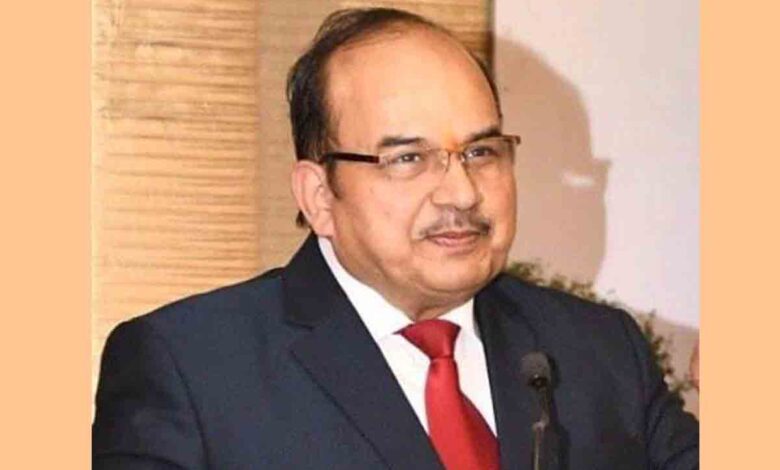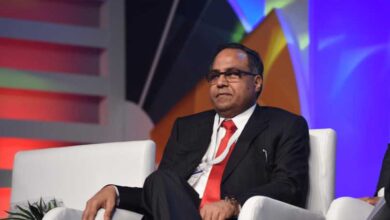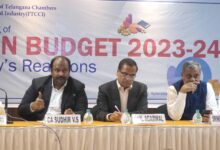“Challenges before the Oil Sector” : By Mr. Deepak Jain, Director General, Federation of Indian Industry

In between 2019 and now, the world is recovering from the after effects of COVID-19. All of a sudden, every country in the world came to a standstill, total global activity came to a stand-still. During this time, oil which used to be black gold, is not anymore.
Today, I shall write of Atmanirbhar Bharat from the national energy security point of view. The petroleum sector has been largely government controlled and we have all been very comfortable in having a limited set of buyers and cozy with all the buyers we know, on first name basis. But now, we have to think otherwise, it is not the petroleum sector but the broader energy sector that we should divert our focus to.
Some figures I am compelled to share with you. For 84% of our consumption, we are dependent on imports which translates to 225 MMT and more than 100 billion dollars of imports. Import of crude oil in India averaged 17.51 MMT from 2014 until 2021, reaching an all-time high of 21.10 MMT in October 2018. These facts summarize the need to talk about the energy security issue. We cannot spend our entire earnings on importing crude oil. From 3 trillion dollars economy, we are now aiming at 5 plus trillion dollar economy by 2024. I would suggest that our oil import bill should not increase. We should be striving to achieve higher scale of economy with lesser fuel spent.
Future competitors
We should be prepared for the Sectoral challenges. We need to have a look at the players in the energy sector as a whole. Now, we have to look at alternative energy sources player, including but not limited to solar energy, wind energy, tidal water waves energy. We have to look at every other conceivable renewable sources of energy, but we must not look for further imports. Fossil fuels are not going to last forever.
In 2020, the installed wind power was 77 GW and now the aim is to install wind power capacity of 135 GW by 2024 (installed 100 GW by Jul’21). Installed capacity of hydro projects in India has reached to 46.3 GW, while capacity of small hydro plants reached to 4.8 GW. The country is targeting about 450 GW of installed renewable energy capacity by 2030.
As I visualize, in the coming times, maybe 10-15 years later, electricity which meets 20% of the energy needs should be able to go from 20% to 40%, or maybe 50%, of the energy needs. India is shifting its public transport fleet to green fuels like bio CNG, ethanol, methanol, electricity and green hydrogen, which will also provide citizens some respite from surging petrol prices.
Pressure points
I remember when the electric vehicles initially came; their range was 70- 80 KMs per charge. Now people are talking about electric vehicles with car need to run its charge for 500 km with ac on. Then the entire segment of cars can be shifted from diesel and petrol to electric vehicles. Earlier vehicles used to give us 7 to 8 kpl now 20 kpl is standard in India. The key is to leverage the efficiency of the vehicles. In the existing vehicles, the use of artificial intelligence and digital technology may result in 30% more efficiency. The upcoming electric vehicles use 80-90% lesser parts than the traditional 4-wheeler. This has the potential to cause a lot of disruption in the industry.
However, the EV segment also offers a lot of opportunity. The battery ecosystem and the charging ecosystem offer a lot of business opportunities – the auto vehicle ecosystem should capitalize soon given EV will become the predominant transport mode in the next 10-15 years. For now, vehicles also migrating to new Bharat emission norms 6 or 7. Companies like tesla are doing their bit, but R&D efforts of local Indian companies are further needed to strengthen their effort.
The way forward
We must think of how to transmit energy over large distances, we must think of ways and means how to store energy, and we must think of all the impediments that will come in the way of implementing our energy security. Atmanirbhar Bharat means that we have to look at it from all angles, and a 360-degree viewpoint. We must invest in harnessing local knowledge. There is a need to increase connects with our universities and encourage R&D at the university level to invest in energy security for the country.
Companies should sponsor field specific research scholars. We can certainly look towards ISRO’s spinoff technologies for Indian companies. It all points towards setting up of dedicated task forces and scaling-up efforts in R&D so that some proper tangible results come in a time-bound manner.
I would encourage GoI to set up a task force to come out with a white paper, which can be discussed with the relevant authorities. The task force will have the primary aim to reduce the over dependence on crude oil which should be replaced more and more by renewable sources of energy. We have a lot more areas like education and defense, where we can deploy our precious foreign exchange for the country.
While my experience with energy as a sector is extremely limited, I have tried to pen down my thoughts as a layman with my 40 years of experience in the industry.














